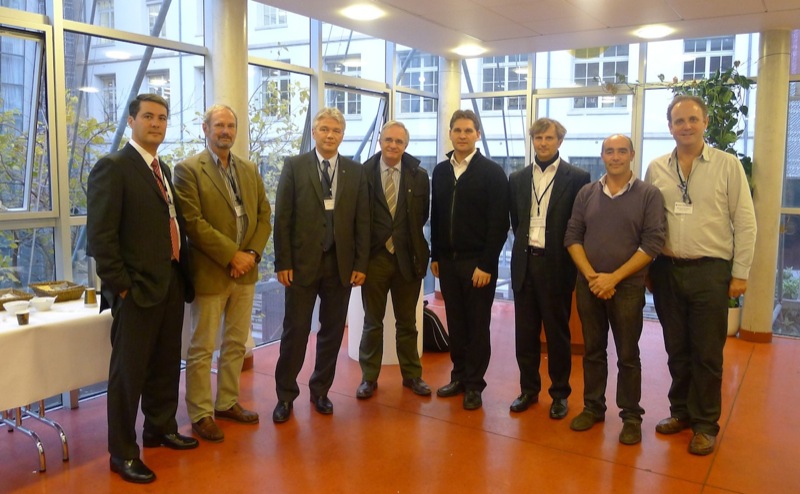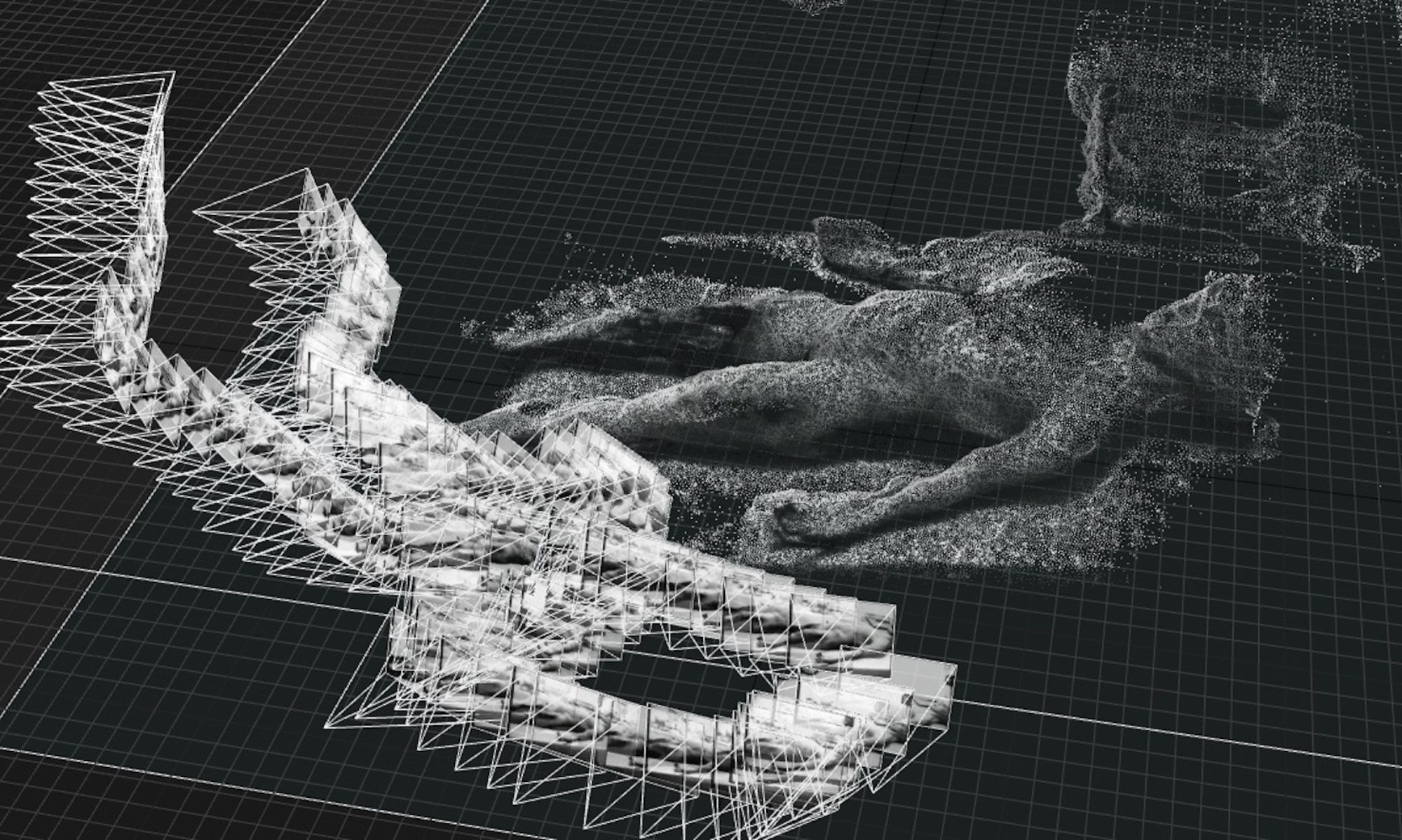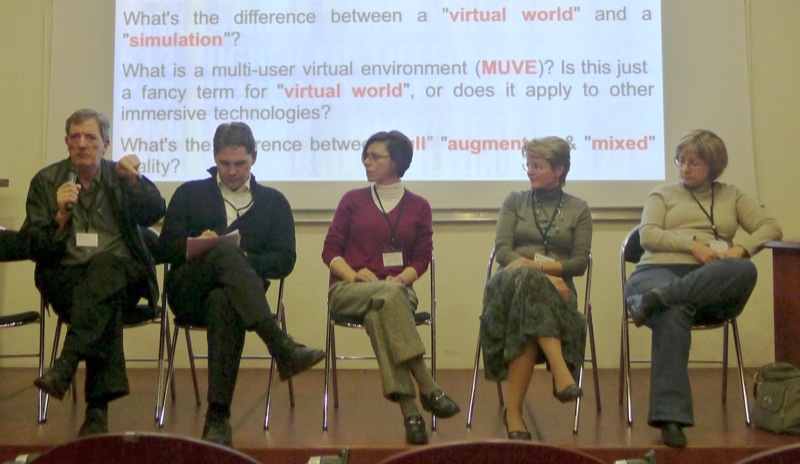2nd European Immersive Education Summit Paris,
26-27 November 2012 École Nationale Supérieure des Arts Décoratifs (Paris, France)
Le 2e Sommet européen de l’éducation immersive, a eu lieu les 26 et 27 Novembre 2012 à l’École nationale supérieure des Arts Décoratifs (31 rue d’Ulm, 75005 Paris, France). Le thème de ce second sommet européen d’Immersive Education (IED) « Éducation immersive : associer créativité, art et pédagogie » invitaient la communauté universitaire et les experts dans ces domaines a exposé leurs travaux s’intéressant à l’immersion, à la simulation, aux jeux d’apprentissage, aux réalités, virtuelle, augmentée et mixte. Le 2ème sommet européen de l’IED s’est appuyé sur ce thème, en explorant comment des nouvelles formes d’enseignements, d’apprentissages et de créations artistiques peuvent être favorisées au sein des espaces virtuels. Ces aspects ont été présentés au regard des nouveaux développements technologiques dans les domaines des réalités, virtuelle, augmentée et mixte. L’accent fut porté sur la pédagogie, l’efficacité et l’évaluation des solutions : des études de cas concrets ont été présentées par des chercheurs impliqués dans ce domaine interdisciplinaire émergeant. Ce colloque a été organisé par le groupe de recherche EN-ER de EnsadLab, Chairman François Garnier, impliqué dans la recherche et le développement de pratiques artistiques dans les espaces partagés en ligne.
 De gauche a droite: – Aaron E. Walsh, Director of the Immersive Education Initiative, USA. – Chris Fowler, (Keynote) Professor, School of Education, Faculty of Humanities and Education,University of the West Indies. – Janis Karklins, Assistant Director General Sector for Communication and Information, UNESCO. – Carlos Delgado Kloos, EIED Board, Professor and Director of Nokia Chair & GAST research group, Carlos III University, Spain. – Pasi Mattila, EIED Board, Program Manager, Center for Internet Excellence (CIE), FInland. – Christian Gütl, EIED Board, Professor and Key Researcher,Institute for Information Systems and Computer Media, Graz University of Technology, Austria – François Garnier, Chaiman EIED 2012, EIED board, head of research program EN_ER/EnsadLab, Ecole nationale supérieure des Arts Décoratifs – Michael Gardner, EIED President of the Board, Director of the Digital Lifestyles Centre, School of Computer Science & Electronic Engineering, University of Essex, UK
De gauche a droite: – Aaron E. Walsh, Director of the Immersive Education Initiative, USA. – Chris Fowler, (Keynote) Professor, School of Education, Faculty of Humanities and Education,University of the West Indies. – Janis Karklins, Assistant Director General Sector for Communication and Information, UNESCO. – Carlos Delgado Kloos, EIED Board, Professor and Director of Nokia Chair & GAST research group, Carlos III University, Spain. – Pasi Mattila, EIED Board, Program Manager, Center for Internet Excellence (CIE), FInland. – Christian Gütl, EIED Board, Professor and Key Researcher,Institute for Information Systems and Computer Media, Graz University of Technology, Austria – François Garnier, Chaiman EIED 2012, EIED board, head of research program EN_ER/EnsadLab, Ecole nationale supérieure des Arts Décoratifs – Michael Gardner, EIED President of the Board, Director of the Digital Lifestyles Centre, School of Computer Science & Electronic Engineering, University of Essex, UK
A Summit focusing on science education and their educational applications in online shared spaces, but also inviting the arts and sciences of communication for an interdisciplinary dialogue around common issues: How to create, how to share, how to learn in the spaces opened up by this new medium. The first session « Art & communication » has been dedicated to developing new art forms in these spaces. It examines the process creation and exhibition of cultural content, information and arts education.
The session was opened with a tribute by Max Moswitzer, viennese artist and Researcher-Lecturer at ZHDK, Zurich University of the Arts, to the artist Chris Marker, who died recently, and originally asked for this keynote. For 60 years, this researcher experimenter was successively photographer, documentary film director, film essayist, writer and multimedia artist. His last years were devoted to explore online shared spaces.
The second session « visualization, Augmented reality » is interested in new forms of mediation offered by three-dimensional support. It was opened by the keynote « The concept of immersion in the relationship Between brain, body of self and others, real and virtual spaces » by Alain Berthoz, Honorary Professor of the Chair of Physiology of Perception and Action at the Collège de France, recalling the fundamental characteristics of spatial perception.
Session 3, « Education / Pedagogy » was opened by the keynote “Virtual Reality and Learning: Where’s the pedagogy?” of Professor Chris Fowler of Faculty of Humanities and Education, University of the West Indies. This session explored and analyzed the use of 3D Virtual Learning Environment for teaching and learning based on concrete experimentations.
Session 4 is dedicated to the « Learning Design », the goal is to design and develop new tools and technological platforms for education. The session was closed by a keynote of Mr. Janis Karklins, Assistant Director General of UNESCO Communication and Information, recalling the hopes and limitations of distance learning facing one of the major geo-political issues in the 21st century: access to knowledge and culture for all.
The conference was closed with a panel moderated by Mr. Aaron Walch « Which is the future of Immersive Education? » who has invited 6 experts working with various technological platforms available today, to discuss the complementarities and opportunities for collaboration between its various developments.
Panel: Inside Immersive Education Technologies. De gauche a droite. – Vic Callaghan, Professor of Computer Science, leader of the Intelligent Environments Group and a director of the interdisciplinary Digital Lifestyles Centre, Essex University, UK. – Pasi Mattila, EIED Board, Program Manager, Center for Internet Excellence (CIE), FInland – Melissa Carrillo Director of New Media & Technology , Smithsonian Institution, USA – Márta Turcsányi-Szabó head of T@T lab, Dept. Media&Educational Informatics ELTE University, Hungary – Diane Jass Ketelhut, Associate Professor science and technology education University of Maryland, College Park, USA
Les vidéos des conférences de ce colloque sont accessibles sur le lien: https://vimeo.com/channels/443376/video
Proceedings : http://jied.org/proceedings/iED_EUROPE_2012.pdf
Listes des organisations ayant contribué à la publication scientifique du colloque EIED 2012
Keynote :
– Collège de France, Chair of Perception and Action Physiology. France
– UNESCO, direction General of Communication and Information.
– University of Arts and Design Zurich, Switzerland.
– University of the West Indies. West Indies.
Papers:
– Curtin University of Technology, Australia
– University of Applied Sciences bfi Vienna/Film, TV & Media Production, Austria
– Graz University of Technology, Austria
– Cyprus University of Technology, Department of Multimedia and Graphic Arts, Cyprus
– Center for Internet Excellence, Finland
– University of Applied Sciences, Finland
– Salpaus Further Education, Finland
– École nationale supérieure des Arts Décoratifs, EnsadLab/EN-ER, France
– ELTE University, Faculty of Informatics T@T Lab, Hungary
– King Abdulaziz University, Faculty of Computing and Information Technology, KSA.
– University of Bedfordshire, Department of Computer Science and Technology, UK
– University of Cambridge, UK
– University of Essex, Computer Science and Electronic Engineering Colchester, U K
– University of St Andrews, School of Computer Science, School of Art History, UK
– Bill & Melinda Gates Foundation, USA
– Massachusetts Institute of Technology, USA
– University of Arizona, USA
– University of Cincinnati, USA
– University Claremont Graduate, USA
– University of Maryland, College Park, USA
– University of Notre Dame USA
– Smithsonian Institution, USA
– Universidad Carlos III de Madrid, Telematics Engineering Department, Spain
– University of Arts and Design Zurich, Switzerland.

